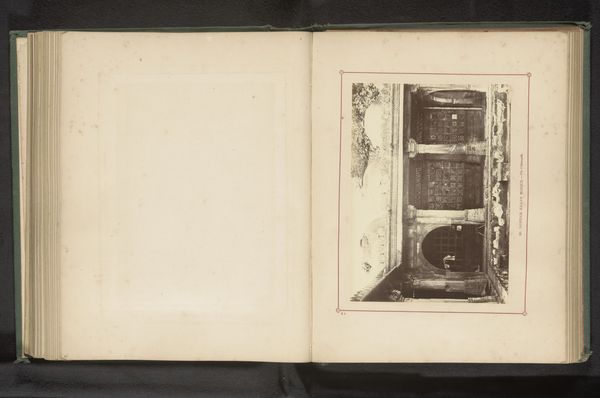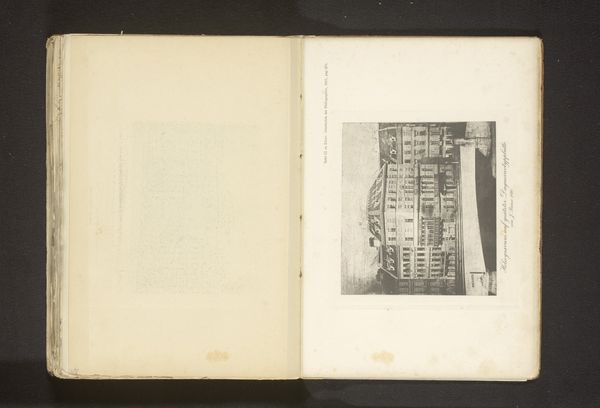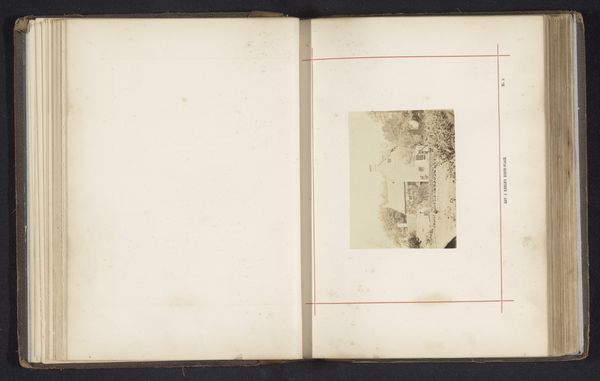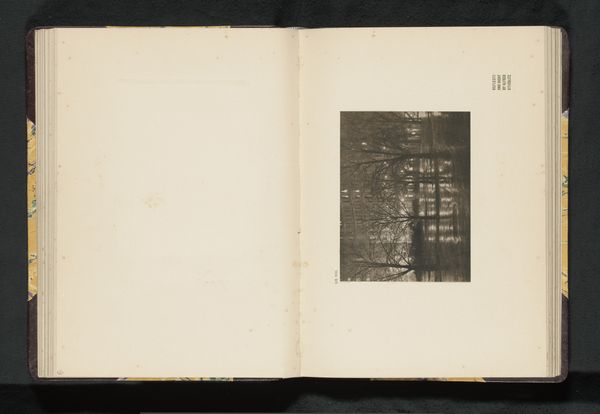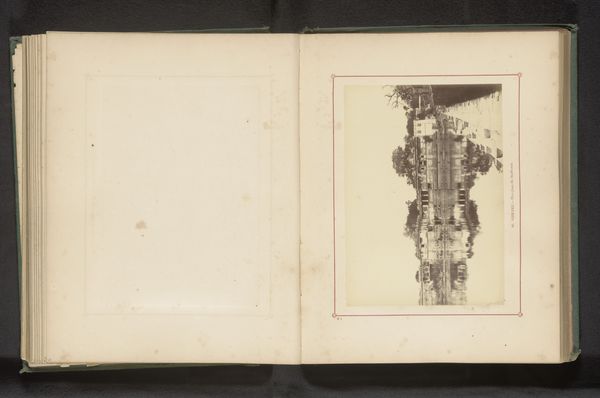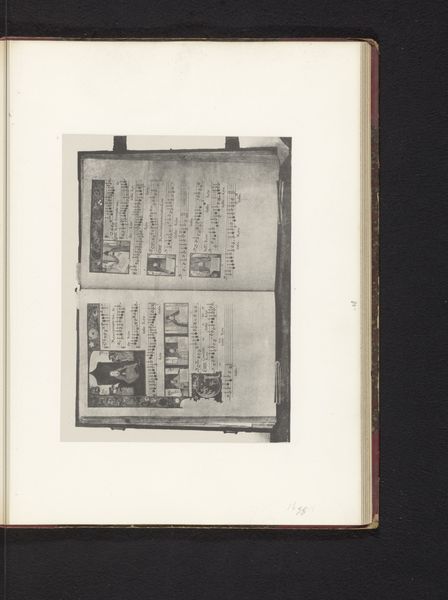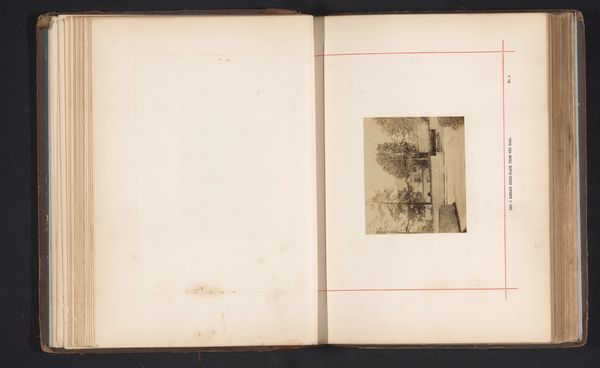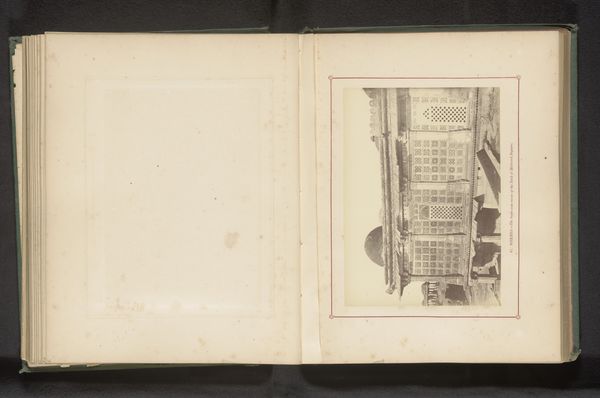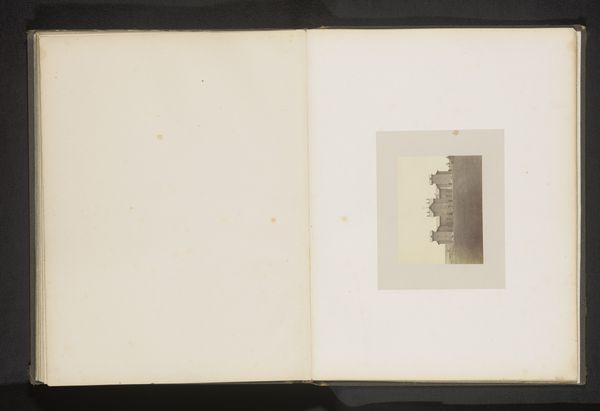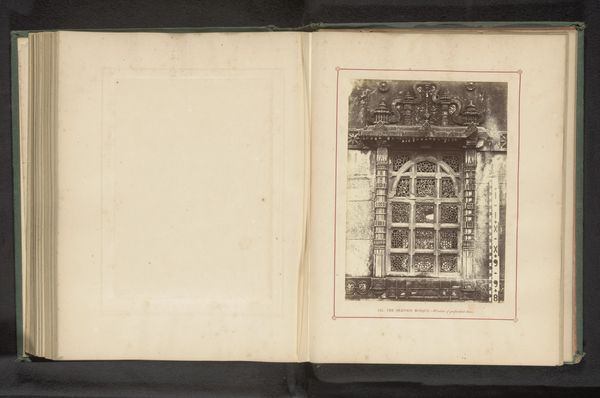
print, photography, albumen-print
#
aged paper
#
ink paper printed
# print
#
photography
#
geometric
#
ancient-mediterranean
#
islamic-art
#
decorative-art
#
albumen-print
#
historical font
Dimensions: height 133 mm, width 183 mm
Copyright: Rijks Museum: Open Domain
Curator: What a fascinating glimpse into the past. Here we have an albumen print, a photograph taken before 1866 by Thomas Biggs. It captures a section of the Dastur Khan mosque in Ahmedabad, specifically a window with its intricate decorations. Editor: It has a compelling formality. Even with the sepia tones hinting at age, the rigid grid of the window asserts a controlled beauty, almost mathematical. It gives off an ordered and calm feeling. Curator: Indeed. Photography at this time, especially in colonial contexts, was heavily intertwined with documentation. Biggs, working in British India, created a visual record, framing and arguably 'collecting' elements of local architecture like this window from the mosque. How did British audiences perceive such imagery, and what did it communicate about power dynamics? Editor: Visually, it is striking how Biggs uses the frame within the frame. The red border around the photo on the page focuses your eye on the elaborate geometrical shapes, tiny variations, and details within each little square. There's so much pattern—it makes you question whether its more of an exercise in artistry or geometry, blurring those definitions. Curator: It's certainly a dialogue between art and the apparatus of colonial administration. Images such as these played a role in shaping perceptions, establishing cultural hierarchies. Consider who had access to these images; these weren't casual snapshots for the masses. These would've found their way into albums, archives, perhaps even informed architectural trends back in Britain, sparking discussions about orientalism in architecture. Editor: Despite its historical context and photographic purposes, the image draws me in because of the formal composition and intricate geometry. These patterns would resonate across various aesthetic disciplines: decorative arts, painting and more, no? It brings to light an enduring artistic appeal in geometric design transcending cultural contexts. Curator: Absolutely. This piece really highlights the way documentation can quickly evolve into a complex form of cultural dialogue, carrying far more meaning than the initial snapshot intends. It urges us to explore power and imagery’s lasting echoes. Editor: I agree. It reminds us of the capacity of visual details, no matter how technical, to evoke emotional and intellectual responses that shift and resound differently across epochs and spectators.
Comments
No comments
Be the first to comment and join the conversation on the ultimate creative platform.
